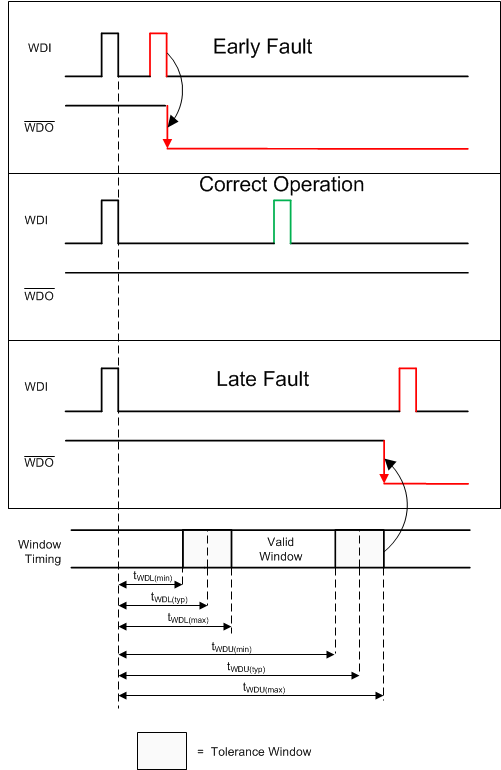SBVS301B October 2016 – September 2021 TPS3850
PRODUCTION DATA
- 1 Features
- 2 Applications
- 3 Description
- 4 Revision History
- 5 Pin Configuration and Functions
- 6 Specifications
- 7 Detailed Description
- 8 Application and Implementation
- 9 Power Supply Recommendations
- 10Layout
- 11Device and Documentation Support
- 12Mechanical, Packaging, and Orderable Information
Package Options
Mechanical Data (Package|Pins)
- DRC|10
Thermal pad, mechanical data (Package|Pins)
- DRC|10
Orderable Information
7.3.6 Window Watchdog Timer
This section provides information for the window watchdog modes of operation. A window watchdog is typically employed in safety critical applications where a traditional watchdog timer is inadequate. In a traditional watchdog, there is a maximum time in which a pulse must be issued to prevent the reset from occurring. However, in a window watchdog the pulse must be issued between a maximum lower window time (tWDL(max)) and the minimum upper window time (tWDU(min)) set by the CWD pin and the SET0 and SET1 pins. Table 8-5 describes how tWDU can be used to calculate the timing of tWDL. The tWDL timing can also be changed by adjusting the SET0 and SET1 pins. Figure 7-8 shows the valid region for a WDI pulse to be issued to prevent the WDO from being triggered and being pulled low.
 Figure 7-8 TPS3850 Window Watchdog Timing
Figure 7-8 TPS3850 Window Watchdog Timing